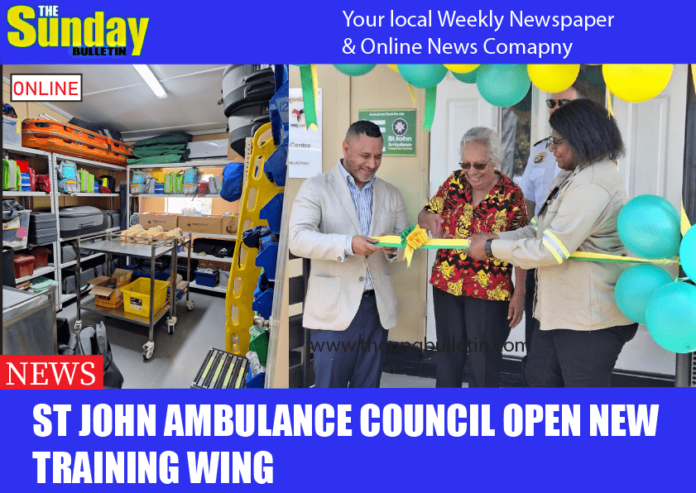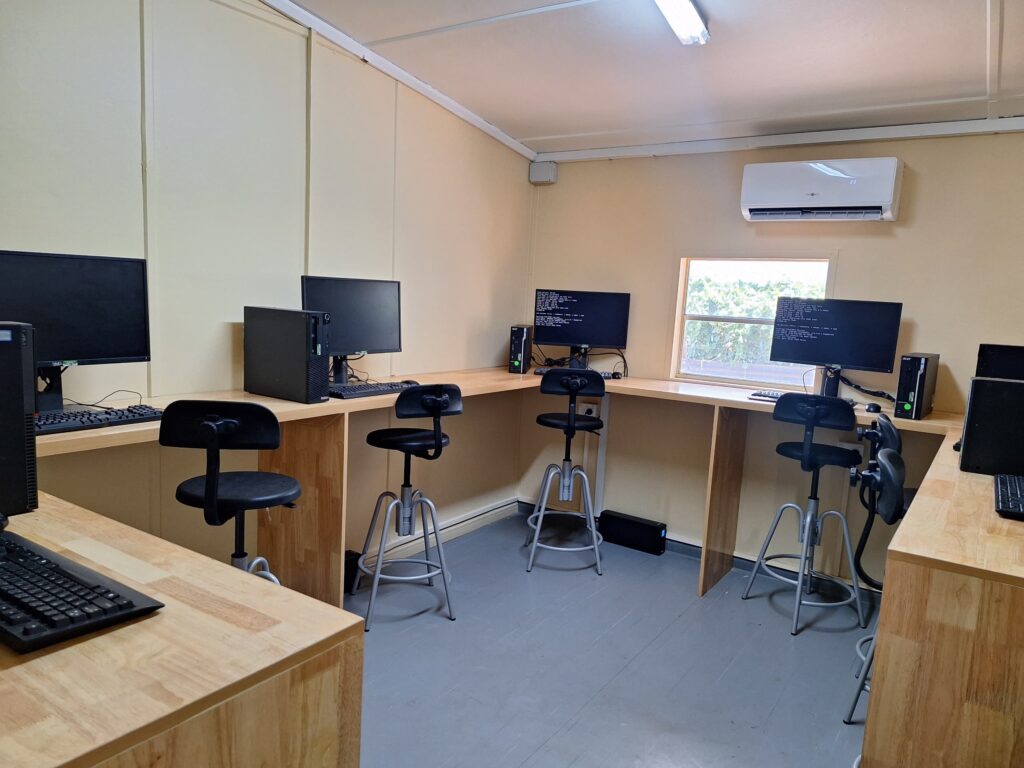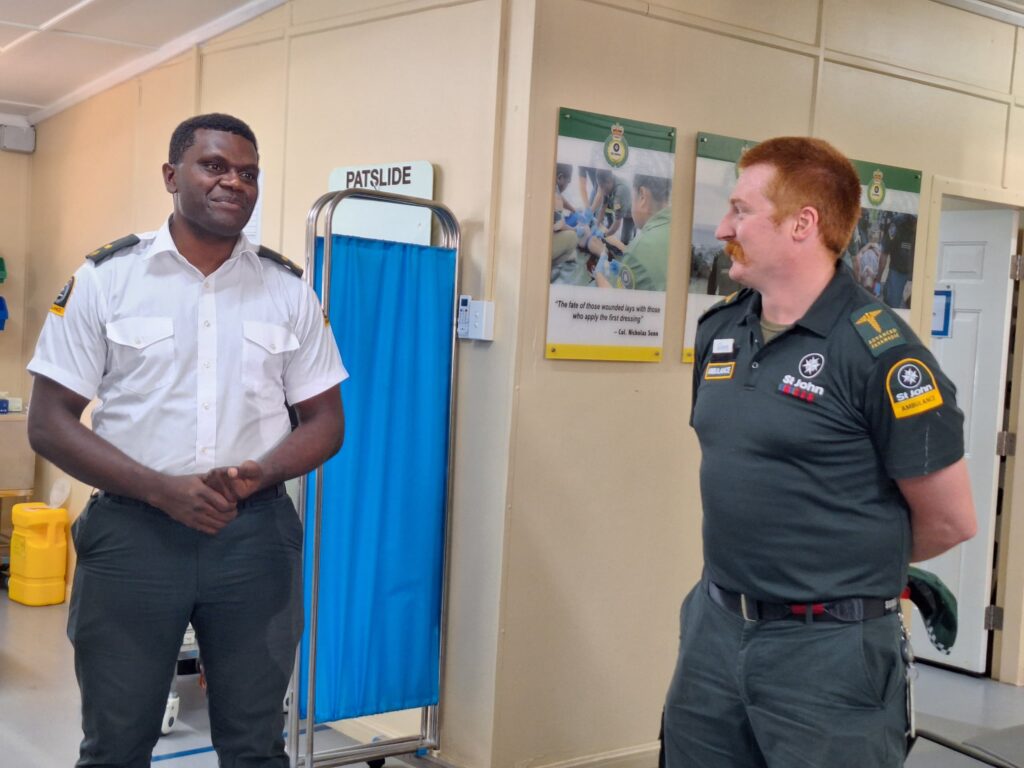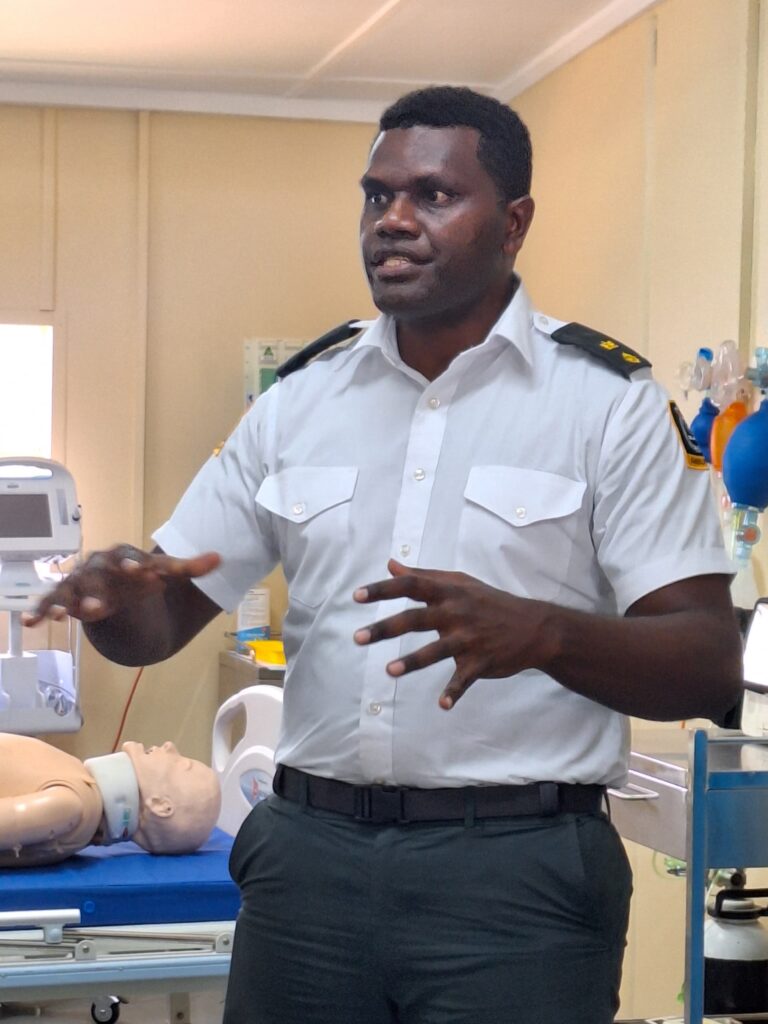
By DALCY LULUA
THE National St John Ambulance Council (NStJA) has opened its newly constructed wing of the National Ambulance Education College in Port Moresby yesterday.
This state-of-the-art facility was made possible through the generous support of ExxonMobil PNG (EMPNG), coordinated through the National Department of Health (NDoH).
The new wing boosts the Ambulance Education College’s capacity by 50%, allowing up to 45 students to train across two classes simultaneously.

This modern facility features high-fidelity simulation rooms, practical training spaces, and a simulated ambulance, creating a realistic environment for ambulance students to develop life-saving skills.
In his opening remarks at the opening ceremony, Chief Commissioner of NStJA, Matt Cannon, highlighted the importance of the ambulance college and the new wing.
“Today, we are opening a new chapter with the unveiling of this new wing,” Cannon said.
“Funded by a generous grant from ExxonMobil and the Prime Minister & NEC, this expansion allows us to increase the capacity and scope of our training programs,” he said.

“The new space provides us with the ability to develop more specialised courses, particularly in critical care and aeromedical services, so that our personnel are always prepared to meet the demands of emergency medicine.
“With the opening of this new wing, this is not just infrastructure—it is a step forward for safer emergency care.
“We are ensuring that the system remains robust so that our personnel are continuously trained to ensure they step forward when help is needed.”
Cannon said the National Ambulance Education College is the heart of their training programs.
“It is here that every Ambulance Officer and emergency ambulance professional begins their journey,” he said.
“We deliver recruit training, ensuring that our recruits learn the foundational skills necessary to become competent and reliable emergency responders.

“Our trainees go on to serve in some of the most remote and challenging environments in Papua New Guinea, where their skills and training are put to the test daily.
“This facility ensures that wherever they are deployed, from the Highlands to the coastal regions, they are equipped with the knowledge and expertise to provide life-saving care,” said Commissioner Cannon.
He further emphasized that the facility is where NStJA deliver critical care training and aeromedical transport education for doctors, paramedics, and specialist nurses.
“The full suite of care from basic life support to advanced medical interventions is taught within these walls.
“This breadth of education ensures that our teams are equipped to meet the diverse and complex needs of patients across Papua New Guinea.”
Speaking also at the event, ExxonMobil PNG (EMPNG), Planning and Contribution Supervisor Ms Belinda Gurra stated that EMPNG is committed to strengthening and enhancing public health and safety through partnership with NStJA.
“Through its contributions, a new training facility; the NStJA PNG Education Center and a brand-new ambulance vehicle are commissioned today,” Ms Gurra said.

She said “This sustained partnership not only strengthens the capabilities of the NStJA, but also reinforces ExxonMobil’s role as a responsible corporate citizen dedicated in promoting health and safety in communities in which we operate. EMPNG contributed K250 000 towards the construction of the National St John Ambulance PNG Education Center and K270 000 towards the purchase of the brand-new ambulance vehicle that will be added to the National Capital District (NCD) fleet.”
Deputy Governor for NCD and leader of Motu Koita Assembly, Dadi Toka, applauded the NStJA PNG for improving over the years.
“Over the last few years, how we respond to accidents and emergencies in the city has gone to a new level- its the level that Papua New Guineans deserve to see,” Toka said.
“We’re not only opening a new wing at NStJA College but we are also laying a stronger foundation for emergency Healthcare in our country.
“The partnerships shown by EMPNG and NDoH demonstrates a deep commitment in improving health and well being of our people.
“It demonstrates what can achieve when government, private industry and community come together with a shared vision,” said Mr Toka.
